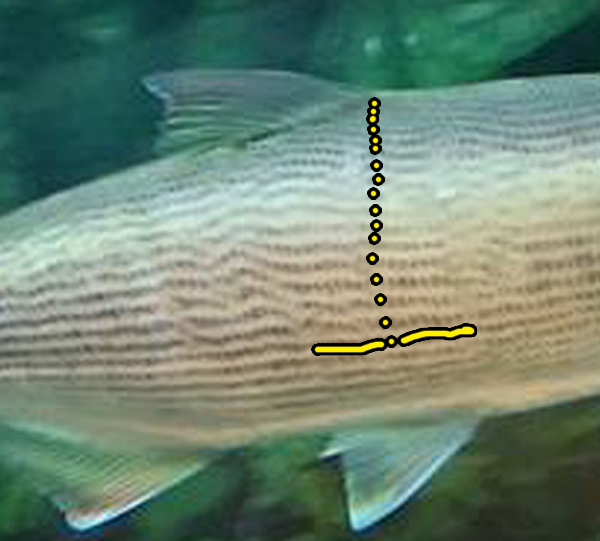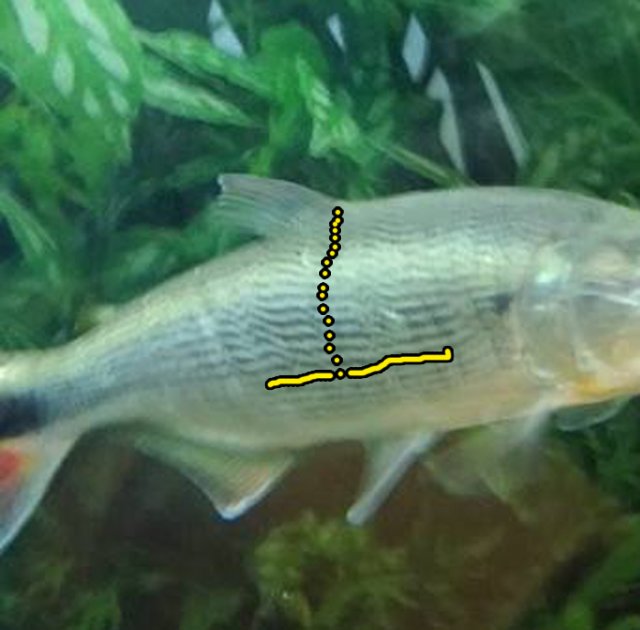Dorado ID... frankie or brassie?
- Thread starter Jakob
- Start date
You are using an out of date browser. It may not display this or other websites correctly.
You should upgrade or use an alternative browser.
You should upgrade or use an alternative browser.
Well if the only fish that comes from that area is one species and the fish pictured in this thread is another then guess what? Something doesn't add up. I'd rather ID a fish based on looks rather then location for ONE simple reason - importers say whatever sells fish. IF the fish doesn't look like what it should be then maybe the "reported" collection point is wrong. Agreed?
If the fish looks like one species I'd go with that idea rather then basing the ID on here-say regarding a location. If it looks like a duck and quacks like a duck should we believe it's a goose cause the seller said it was?
I've bought wolves that are supposedly a certain species just because of where they came from and end up with something else. Why? Cause telling someone what they want to hear sells fish.
If the fish looks like one species I'd go with that idea rather then basing the ID on here-say regarding a location. If it looks like a duck and quacks like a duck should we believe it's a goose cause the seller said it was?
I've bought wolves that are supposedly a certain species just because of where they came from and end up with something else. Why? Cause telling someone what they want to hear sells fish.
SMH
You guys have fun wallowing in your stupidity...
Matt
That's one HELL of a big claim from someone who has absolutely NO supporting evidence.
That being said, I gave you guys academic information that can be used to confirm or deny speciation beyond question in the sticky. USE IT!
I'll post this pictures that I photoshopped of the OP's fish and let you all do your homework. The pics are a bit wonky, but when I saw this fish, it looked like what it is to me right off the bat, even if it is a slightly unusual one.


In light of this thread, I've spent the past hour scouring the website for quality dorado pictures, and I'm beginning to notice a correlation between what we call these fish and their scale counts. In almost every instance where we see a fish considered a frankie (assuming the pics are good enough to allow me to do so), the number of scales that I count between the dorsal fin insertion and the lateral line is 14. When I count the scales on the very few representatives of what we consider brassies, the normal count is 18.
Now, I am counting from what I was taught is the dorsal fin origin: the place on the fish's back where the dorsal fin originates; the most anterior portion of the dorsal fin. However, If I count from the CENTER of the length of the dorsal fin's attachment to the back of ths fish, the numbers that I'm getting from our representative fish drop to 12 or frankies and 16 for brassies. The modal number acquired by Lima and Britsky (2007) for the species surveyed between frankies and brassies is, ironically, 12 and 16. I can't help but wonder if they simply counted from the center of the dorsal fin instead of the front. It's not clear in the paper.
Another interesting correlation that I've noted between the species is that the stripes on brassies tend to be rather squiggly and broken, while the frankies tend to have much straighter, cleaner stripes. One could consider this another "hobbyist level" diagnostic trait.
ON THE SUBJECT OF HOBBYIST DIAGNOSTIC TRAITS
Such as head shapes for example, no where have I ever said that this is a perfect way to identify the fish. It is simply something that is useful as a general guideline, the the white stripe on an armatus. Just because it's missing doesn't make the fish a scomb. Same principle here. Use the ACADEMIC traits if the hobbyist guidelines don't give a clear answer.
In differentiating between the two species of Salminus that are morphologically quite similar, the prime method, if known, should be geographic origin.
The OP said that his fish is from Paraguay. S. brasiliensis is native to Paraguay. S. franciscanus is not (nor anywhere near).
What evidence exists that the fish in question is either from the very limited native range of S. franciscanus or (contrary to the information that the OP provided) farm raised?
Matt
The OP said that his fish is from Paraguay. S. brasiliensis is native to Paraguay. S. franciscanus is not (nor anywhere near).
What evidence exists that the fish in question is either from the very limited native range of S. franciscanus or (contrary to the information that the OP provided) farm raised?
Matt
That's one HELL of a big claim from someone who has absolutely NO supporting evidence.
That being said, I gave you guys academic information that can be used to confirm or deny speciation beyond question in the sticky. USE IT!
I'll post this pictures that I photoshopped of the OP's fish and let you all do your homework. The pics are a bit wonky, but when I saw this fish, it looked like what it is to me right off the bat, even if it is a slightly unusual one.
View attachment 1146409
View attachment 1146410
In differentiating between the two species of Salminus that are morphologically quite similar, the prime method, if known, should be geographic origin.
The OP said that his fish is from Paraguay. S. brasiliensis is native to Paraguay. S. franciscanus is not (nor anywhere near).
What evidence exists that the fish in question is either from the very limited native range of S. franciscanus or (contrary to the information that the OP provided) farm raised?
Matt
I take it you didn't read all three of my posts? Lol
Lots of fish come in labeled as brasiliensis and turn out to be franciscanus. The guys here drew a reasonable conclusion by thinking that this fish probably isn't a brassy.
Hiwever, the ID of the fish in question is academic and not subject to interpretation or arguement. In the first of my three posts I posted images showing how I arrived at that conclusion, but I didn't say what that conclusion was because I want you guys to look it up. See the Key to Species part of the sticky, then reference my pictures.
Too many people focus on the hobbyist guidelines and then argue over it, when the answer is very simple and in the sticky.
I know your conclusion but I won't spoil it
C
Chicxulub
I usually do use the stickies if not I use the taxonomy, but my thing with this situation was he was ignoring every other possibility and then basically calling us stupid. Guess I got caught up dealing with his stubbornness rather than helping the OP.
I know your conclusion but I won't spoil it C Chicxulub I usually do use the stickies if not I use the taxonomy, but my thing with this situation was he was ignoring every other possibility and then basically calling us stupid. Guess I got caught up dealing with his stubbornness rather than helping the OP.
No worries man. It happens to everyone from time to time. Things got heated here, but stayed pretty much civil.
As for conclusions, I'm curious to see who got it right lol


